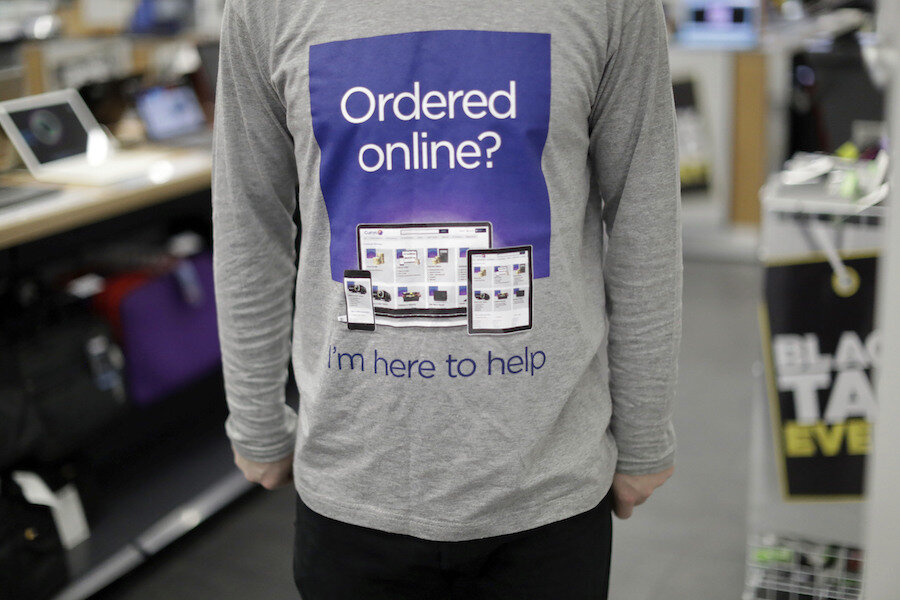Strong consumer spending, holiday sales bode well for the economy
Loading...
Record-breaking holiday sales over the last few days, mostly online and on mobile phones, have added more fuel to a recent bout of strong economic growth.
Sales of toys, game consoles, and electronic gadgets led online sales on Cyber Monday, making yesterday the largest online shopping day in history, according to Adobe, a software company that helps process 80 percent of all online transactions from the top 100 US retailers.
Shoppers bought $3.39 billion worth of products online, a 10 percent increase from the Cyber Monday sales in 2015 and above the $3.36 billion Adobe's data analysis team had projected.
Shoppers also turned out in much larger numbers for the other two key shopping days this weekend: Black Friday and Small Business Saturday. The number of people who reported shopping or dining out during Small Business Saturday, a national campaign to boost sales at local, independent businesses launched by American Express in 2010, grew by 13 percent.
Black Friday was most notable for its online sales this year. According to Adobe data, $3.34 billion worth of goods were sold on the web that day. This made for a 22 percent increase over the year before, with more people shopping online than in stores during the promotional holiday (44 vs. 40 percent, respectively), according to the National Retail Federation.
For companies like Amazon this year’s will be the best Cyber Monday in history, according to the Wall Street Journal.
Sales at brick-and-mortar stores on Friday weren’t quite as bright, however. Retail analytics firm RetailNext reported that the number of store visitors fell nearly 11 percent from last year on Black Friday, with store sales dipping more than 10 percent, reports the Journal.
But despite the disappointing results for retail stores, consumer spending overall is clearly on the rise, and it’s helping the economy grow at its highest rate in a couple of years.
Household spending makes up 70 percent of the country’s economic output, making it the largest indicator of growth. It rose a respectable 2.8 percent at an annualized rate last quarter, according to Tuesday data released by the US Commerce Department. Since the economy is largely powered by consumers, this bodes well for the next few months.
“Everything dealing with the consumer seems to be very positive,” notes David Payne, an economist at Kiplinger, a personal finance and business forecasting website. This includes strong job growth, a low unemployment rate, and incomes that are finally starting to rise.
In 2015, the median household income rose for the first time since 2007, according to data from the US Census Bureau. It grew by 5.2 percent from 2014 – an upward trend that held across races, regions, and income groups. This means the typical middle-income household brought home $56,516 last year, adjusted for inflation, compared with $53,718 in 2014.
This likely has helped prop consumer confidence, which soared this month to the highest level since July 2007, the halcyon days that preceded the Great Recession by five months. And a tumultuous election season has had little effect so far, economists say.
“While the majority of consumers were surveyed before the presidential election, it appears from the small sample of post-election responses that consumers’ optimism was not impacted by the outcome,” reports the nonprofit research organization Conference Board, which released its monthly consumer confidence survey on Tuesday. “With the holiday season upon us, a more confident consumer should be welcome news for retailers,” the board said in an online announcement.
Kiplinger’s Mr. Payne says he hopes to see strong spending through the holiday season.
“We want to see momentum continue through Christmas without a lot of heavy discounting; that’s the next key data point,” says Payne.
Consumer spending is expected to remain strong into early 2017, and possibly further into the year, at least in the short term. Some economists predict spending could be buoyed by tax cuts that are expected to come soon after Donald Trump's administration takes office in January.








